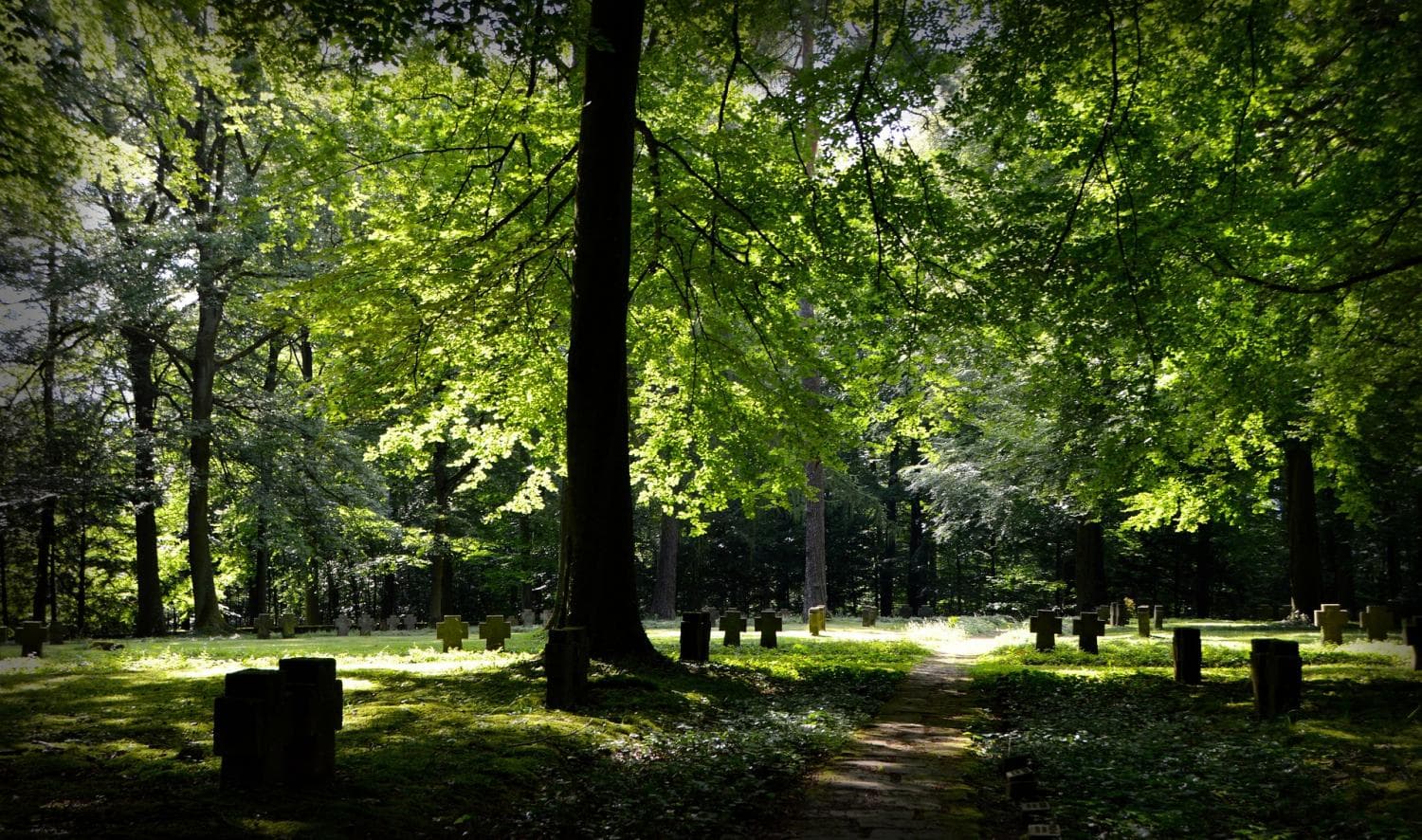Memorial Service
A Green Burial For an Environmentally Friendly Choice
Green (or natural) burial emphasizes simplicity and environmental sustainability. The body is neither cremated nor prepared with chemicals such as embalming fluids. It is simply placed in a biodegradable coffin or shroud and interred without a concrete burial vault. The grave site is allowed to return to nature.

Green (or natural) burial emphasizes simplicity and environmental sustainability. The body is neither cremated nor prepared with chemicals such as embalming fluids. It is simply placed in a biodegradable coffin or shroud and interred without a concrete burial vault. The grave site is allowed to return to nature. The goal is complete decomposition of the body and its natural return to the soil. Only then can a burial truly be “ashes to ashes, dust to dust,” a phrase so often used when we bury our dead.
Why Choose a Green Burial?
Green burials are not new. Most burials before the mid-19th century were conducted this way, as are many Jewish and Muslim burials today. Green burials are enjoying a resurgence in popularity, for a number of reasons:
Simplicity. The idea of wrapping the body in a shroud or placing it in a plain, unadorned coffin appeals to those who prefer their burial arrangement to be simple, natural and unpretentious.
Lower cost. Because green burials do not involve embalming, fancy caskets, or concrete vaults, they can be a very cost-effective alternative to conventional burials, lowering the cost by thousands of dollars. If the family supplies their own shroud or coffin, the cost can be further reduced.
Conserving natural resources. Each year US cemeteries bury over 30 million board feet of hardwood and 90,000 tons of steel in caskets, 17,000 tons of steel and copper in vaults, and 1.6 million tons of reinforced concrete in vaults. With green burial, fewer resources are used.
Eliminating hazardous chemicals. For some, forgoing the embalming process is the main attraction, since embalming fluid contains formaldehyde, a respiratory irritant and known carcinogen. In the US about 5.3 million gallons of embalming fluid are used every year, and funeral home workers are exposed to it routinely.
Preserving natural areas. Love of nature and a desire for “eternal rest” in a forever-wild meadow or forest are frequently-cited reasons for choosing green burial. The burial sites restore or preserve a natural landscape populated by native trees, shrubs and wildflowers; the sites offer food and refuge to birds and other wildlife. The most conservation-intensive green cemeteries do not use fertilizer, pesticides, or herbicides. A green cemetery can be an important component in the acquisition and conservation of native habitats.
How to Choose a Green Cemetery?
The first green cemetery opened in the US in 1998; over 90 operate here today. Some green cemeteries comprise a specially-designated section within a conventional cemetery. Others are expansive tracts of land, often contiguous with an existing park, critical habitat area or forever-wild conservation area. Click here for a link to a list of known green burial grounds in the U.S.
Most green cemeteries exclude embalmed remains and burial vaults; some exclude cremated remains as well. Shrouds or caskets made of natural, biodegradable, non-toxic materials are often specified. Graves are typically marked only by a natural rock, native plant or plaque flush with the ground, with grave locations recorded by GPS. To preserve the pristine natural landscape and protect native plants and wildlife, most green cemeteries forbid or limit personal plantings and many memorial decorations like flowers, wreaths, flags, chimes, balloons, and toys. Be sure to inquire about the cemetery’s special restrictions when buying a plot.
How Much Does Green Burial Cost?
Prices vary widely by region and the type of green burial site. Burial plots in a green cemetery tend to be larger than those in a conventional cemetery, so may cost more. The cost for a grave site and interment will range from $1,000 to $4,000 for a body, or from $200 to $1,000 for cremated remains.
You can save considerable money by shopping for your casket online, rather than purchasing highly-promoted “earth-friendly caskets” that may cost thousands of dollars. The funeral director is required by law to accept any appropriate container you provide, without charging additional fees. Caskets of plain wood, cardboard or wicker would be acceptable at most green cemeteries.
Helping with Funeral Arrangements
Speak to a caring and knowledgeable Funeral Advisor at Memoria who can help you craft a green burial. We are experienced in this industry and will guide you through the many hurdles from start to finish. This is a difficult time in your life and you shouldn’t have to face it alone.


